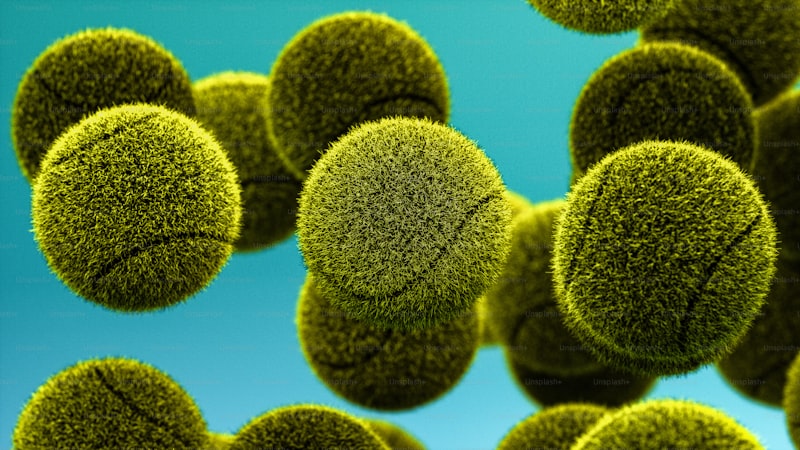Ever wondered how life thrives in the harshest corners of our planet? Enter extremophilic bacteria, masters of survival in extreme environments like boiling hot springs, icy glaciers, and deep-sea hydrothermal vents. These tiny organisms have evolved incredible biochemical adaptations that allow them to not just survive, but thrive where most life forms would perish.
One of their standout features is their ability to withstand temperature extremes that would instantly kill other organisms. Take the heat-loving thermophiles, for instance. They produce heat-stable enzymes that remain functional even at temperatures above boiling point. Imagine cooking at 100°C and your ingredients not breaking down — that’s the magic of extremophilic bacteria!
On the flip side, there are psychrophiles, bacteria that call the freezing Antarctic ice their home. To survive in these icy conditions, they produce anti-freeze proteins that prevent ice crystal formation within their cells. It’s like having a built-in winter jacket that keeps them cozy even in the coldest temperatures on Earth.
But temperature isn’t the only challenge extremophiles tackle. Some thrive in highly acidic or alkaline environments that would dissolve metals or burn human skin. Acidophiles, for example, thrive in the acidic waters of abandoned mines, thanks to their ability to maintain a stable internal pH. They achieve this by pumping out protons or using special proteins that shield their delicate machinery from acid attack.
Then there are halophiles, the salt-loving bacteria that flourish in environments with salt concentrations nearing saturation. They manage excess salt by accumulating compatible solutes — small molecules that counterbalance the osmotic pressure caused by salt. It’s akin to stocking up on water during a marathon to keep going without dehydration.
These biochemical adaptations aren’t just biological curiosities; they hold immense promise for biotechnology and medicine. The enzymes of extremophiles, for instance, are already used in industrial processes requiring high temperatures or harsh chemical conditions. Understanding their unique adaptations could also lead to breakthroughs in medicine, potentially offering insights into combating diseases or developing novel treatments.
In essence, extremophilic bacteria are nature’s ultimate survivors, pushing the boundaries of where life can exist on Earth. Their biochemical prowess not only fascinates scientists but also offers a glimpse into the resilience and adaptability of life itself.
Surviving the Extreme: How Extremophilic Bacteria Thrive in Hostile Environments

Imagine a world where survival is not just about adapting but thriving in the most extreme conditions. This is the reality for extremophilic bacteria, remarkable microorganisms that defy conventional limits of life. From scorching hot springs to the icy depths of polar glaciers, these resilient bacteria have mastered the art of survival in hostile environments that would swiftly eliminate most other forms of life.
Extremophilic bacteria are characterized by their ability to thrive in environments with extreme temperatures, pH levels, salinity, or pressure. Their adaptability is awe-inspiring; they can endure temperatures ranging from near boiling points to below freezing, making them pivotal in ecosystems where typical life forms cannot persist.
One of the most intriguing aspects of extremophiles is their biochemical adaptations. To survive in such harsh conditions, these bacteria have evolved unique cellular structures and biochemical processes. For instance, some extremophiles produce special proteins that stabilize their cellular structures under extreme temperatures or pH levels, effectively shielding them from environmental stressors.
In hot springs, where temperatures soar above 80°C, thermophilic bacteria like Thermus aquaticus thrive by utilizing heat-stable enzymes that remain functional even in scalding water. These enzymes have revolutionized molecular biology and biotechnology, serving as crucial tools in DNA amplification techniques like PCR (Polymerase Chain Reaction).
On the opposite end of the spectrum, psychrophilic bacteria inhabit freezing environments such as polar ice caps. These cold-adapted extremophiles produce antifreeze proteins that prevent the formation of ice crystals within their cells, allowing them to survive and even flourish in subzero temperatures.
The study of extremophilic bacteria not only expands our understanding of microbial life but also holds promise for practical applications. Biotechnologists are exploring extremophiles for their potential in industrial processes, bioremediation, and even astrobiology, as these resilient organisms provide clues to how life could exist in extreme extraterrestrial environments.
Extremophilic bacteria challenge our perception of habitability and resilience. Their ability to thrive in conditions once thought uninhabitable underscores the astonishing adaptability of life on Earth. As researchers delve deeper into their biology, the potential applications and insights gained may unlock new frontiers in science and technology, shaping our understanding of life’s boundaries and possibilities.
Nature’s Tough Survivors: The Biochemical Secrets of Extremophilic Bacteria
Ever wondered how life thrives in the harshest environments on Earth? Enter extremophilic bacteria, nature’s ultimate survivors. These remarkable microorganisms have adapted to live in extreme conditions that would be fatal to most other life forms. From scorching geothermal vents at the bottom of the ocean to the icy depths of Antarctica, extremophiles push the boundaries of where life can exist.
What makes extremophilic bacteria so unique lies in their biochemical adaptations. Unlike conventional bacteria, they have evolved specialized enzymes and proteins that function optimally under extreme conditions of temperature, pressure, acidity, or salinity. For instance, some extremophiles produce heat-resistant proteins called chaperones that prevent other proteins from denaturing at high temperatures. This adaptation allows them to thrive in hot springs where temperatures exceed 100°C.
Others have developed mechanisms to survive in highly acidic or alkaline environments. Acidophiles, for example, maintain a stable internal pH despite the acidic surroundings by pumping protons out of their cells or using special membrane proteins that resist acid damage. Meanwhile, alkaliphiles thrive in alkaline lakes or soils by producing proteins that function effectively in high pH conditions.
Extremophilic bacteria also play a crucial role in biotechnology and medicine. Their unique enzymes have applications in industries such as food processing, where heat-stable enzymes improve efficiency and quality. In medicine, extremophile-derived enzymes are used in diagnostic tests and pharmaceuticals due to their robustness and specificity.
Studying extremophilic bacteria not only expands our understanding of life’s diversity but also holds promise for future technologies and discoveries. By unlocking their biochemical secrets, scientists aim to harness their unique properties for innovations ranging from bioremediation to space exploration.
In a world where survival of the fittest takes on a whole new meaning, extremophilic bacteria stand as a testament to nature’s resilience and adaptation. Their biochemical prowess continues to inspire awe and drive scientific inquiry into the frontiers of biology and beyond.
Beyond Limits: Unraveling the Molecular Tricks of Extremophilic Bacteria
Extremophilic bacteria, those hardy organisms thriving in extreme environments, are nature’s ultimate survivors. These microscopic marvels push the boundaries of what life can endure, from the scorching heat of volcanic vents to the frigid depths of polar ice. But what makes them so resilient? The answer lies in their molecular tricks.
At the heart of their survival strategy are specialized proteins and enzymes. Imagine these proteins as tiny machines, finely tuned to operate under extreme conditions. They withstand temperatures that would melt most biological molecules and thrive in acidic or alkaline environments that would dissolve ordinary cells.
One of the most fascinating adaptations is their membrane structure. Extremophiles boast membranes fortified with unique lipid compositions. These lipid layers act like thermal insulators, preserving cellular integrity amidst temperature swings that would freeze or boil water.
Moreover, extremophiles’ genetic makeup reveals a treasure trove of adaptive genes. These genes encode proteins that repair DNA damaged by radiation or high temperatures, ensuring genetic fidelity even under intense stress. It’s akin to having a molecular toolkit for survival in the harshest terrains of our planet.
But beyond survival, extremophiles offer tantalizing prospects for biotechnology and medicine. Their robust enzymes can catalyze reactions at extreme temperatures or pH levels, promising more efficient industrial processes or novel therapies.
In essence, extremophilic bacteria challenge our understanding of life’s limits. They thrive where others perish, unlocking biochemical secrets that could revolutionize industries and deepen our appreciation for the resilience of life itself.
From Hot Springs to Frozen Tundras: Exploring the Global Diversity of Extremophilic Bacteria
Hot springs, such as those found in Yellowstone National Park, are veritable cauldrons where extremophiles like Thermus aquaticus flourish. These bacteria have adapted to temperatures nearing boiling point, utilizing unique enzymes that function optimally under such extreme heat. Scientists have harnessed these enzymes for applications in PCR (Polymerase Chain Reaction), a fundamental technique in genetic research.
Conversely, in the Arctic and Antarctic, extremophiles endure the bitter cold of permafrost and glaciers. Psychrophiles like Colwellia psychrerythraea have evolved mechanisms to thrive in subzero temperatures, offering insights into how life might exist on frozen planets or moons.
Salt-saturated environments like the Dead Sea harbor halophiles, bacteria adept at surviving in high salinity. These organisms, such as Halobacterium salinarum, maintain cellular functions in environments where salt concentrations exceed 10 times that of seawater.
Acidophiles, like Acidithiobacillus ferrooxidans found in acidic mines, thrive in conditions with extremely low pH levels. Their ability to metabolize minerals while tolerating highly acidic environments has implications for bioleaching processes in mining industries.
Deep-sea hydrothermal vents emit superheated water rich in minerals and hydrogen sulfide, nurturing thermophiles like Pyrolobus fumarii. These extremophiles thrive in complete darkness, utilizing chemosynthesis to convert chemicals into energy without sunlight.

Studying extremophiles not only expands our understanding of microbial life but also informs astrobiology, the study of life beyond Earth. The resilience and adaptability of extremophiles suggest that life could potentially exist in the harshest conditions of outer space, offering tantalizing possibilities for future explorations.
Exploring the global diversity of extremophilic bacteria reveals nature’s resilience and creativity in adapting to extreme environments. These microorganisms challenge our perceptions of habitability and inspire groundbreaking scientific discoveries with implications ranging from biotechnology to the search for extraterrestrial life.
Adapt or Perish: How Extremophilic Bacteria Modify Their Biochemistry to Survive
Imagine a bacterium faced with the searing heat of a hydrothermal vent, where temperatures exceed 100°C. To survive such extremes, these extremophiles adjust their biochemical makeup at a fundamental level. Proteins that would denature under normal conditions are stabilized, often through unique amino acid compositions or structural reinforcements. This adaptation allows them to maintain essential cellular functions amidst the thermal turmoil.
Similarly, in the freezing waters beneath Antarctic ice shelves, extremophilic bacteria face a different challenge: subzero temperatures that would freeze most organisms solid. Here, these resilient microbes modify their lipid membranes to remain fluid, preventing crystallization that would otherwise rupture cell walls. By incorporating high concentrations of unsaturated fatty acids, they ensure their membranes remain flexible even in the harshest cold.
But it’s not just temperature extremes that these bacteria conquer. Some thrive in highly acidic or alkaline conditions, where pH levels would dissolve or denature most proteins. Through ingenious modifications in their enzyme structure or the production of protective biofilms, they create microenvironments that shield them from the lethal effects of acidity or alkalinity.
In essence, extremophilic bacteria epitomize the adage “adapt or perish.” Their survival hinges on their ability to swiftly and effectively alter their biochemistry in response to environmental stresses. By doing so, they not only survive but often thrive where other life forms cannot even contemplate existence. Studying these marvels of adaptation not only expands our understanding of life’s resilience but also holds promise for biotechnological applications, from enzyme engineering to environmental cleanup.
Extremophilic bacteria are the ultimate testament to life’s ability to adapt, reminding us that in the battle for survival, those who can modify and evolve will inherit the most extreme corners of our planet.
Extreme Environments, Extreme Solutions: Biochemical Innovations of Extremophilic Bacteria
Imagine bacteria that flourish in scalding hot springs or in the frigid waters of polar ice caps. Their survival hinges on unique biochemical adaptations, such as heat-resistant enzymes or antifreeze proteins. These adaptations not only enable them to survive but also thrive in their extreme habitats, untouched by conventional life forms.
In biotechnology and medicine, extremophilic bacteria are invaluable. Enzymes extracted from these organisms are used in processes requiring high temperatures, like industrial processes or the synthesis of pharmaceuticals. By harnessing their biochemical prowess, scientists unlock novel ways to enhance industrial efficiency and develop new medical treatments.
Moreover, extremophiles offer insights into the origins of life on Earth and the potential for life elsewhere in the universe. Studying how these bacteria withstand extreme conditions informs astrobiology, probing the limits of where life can exist beyond our planet.
As we delve deeper into the biochemical innovations of extremophilic bacteria, we uncover nature’s remarkable ability to adapt and thrive in even the harshest environments. Each discovery opens new doors for technological advancement and expands our understanding of life’s resilience in the face of adversity. These tiny organisms remind us that sometimes, the most extraordinary solutions come from the most extreme places.
Frequently Asked Questions
What are some examples of biochemical adaptations in extremophilic bacteria?
Discover how extremophilic bacteria adapt to extreme environments through biochemical strategies such as specialized enzymes, osmolytes like trehalose, and membrane adaptations like ether lipids.
How do extremophilic bacteria survive in extreme environments?
Learn how extremophilic bacteria adapt and thrive in extreme environments through unique biological mechanisms. This FAQ provides clear insights into the strategies these organisms use to survive high temperatures, acidic conditions, high pressure, and other challenging environments.
Why are extremophilic bacteria important for scientific research?
Learn why extremophilic bacteria are crucial for scientific research. Explore how these resilient organisms thrive in extreme environments, offering valuable insights into biochemistry, evolution, and potential applications in medicine and biotechnology.
What are extremophilic bacteria and where are they found?
Extremophilic bacteria are organisms capable of thriving in extreme environments that would be hostile to most life forms. They are found in places such as hot springs, deep-sea hydrothermal vents, acidic lakes, and even in high-salt environments like the Dead Sea. These bacteria have adapted unique biochemical strategies to survive and thrive in these harsh conditions.
How can extremophilic bacteria be applied in biotechnology and environmental studies?
Learn how extremophilic bacteria are utilized in biotechnology and environmental studies, exploring their unique abilities to thrive in extreme conditions such as high temperatures, acidity, or salinity. Discover their potential in producing enzymes for industrial processes, bioremediation of polluted environments, and applications in pharmaceuticals and agriculture.


